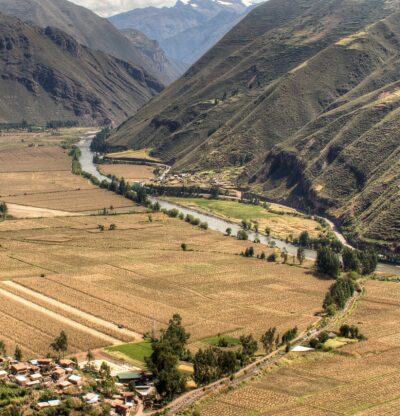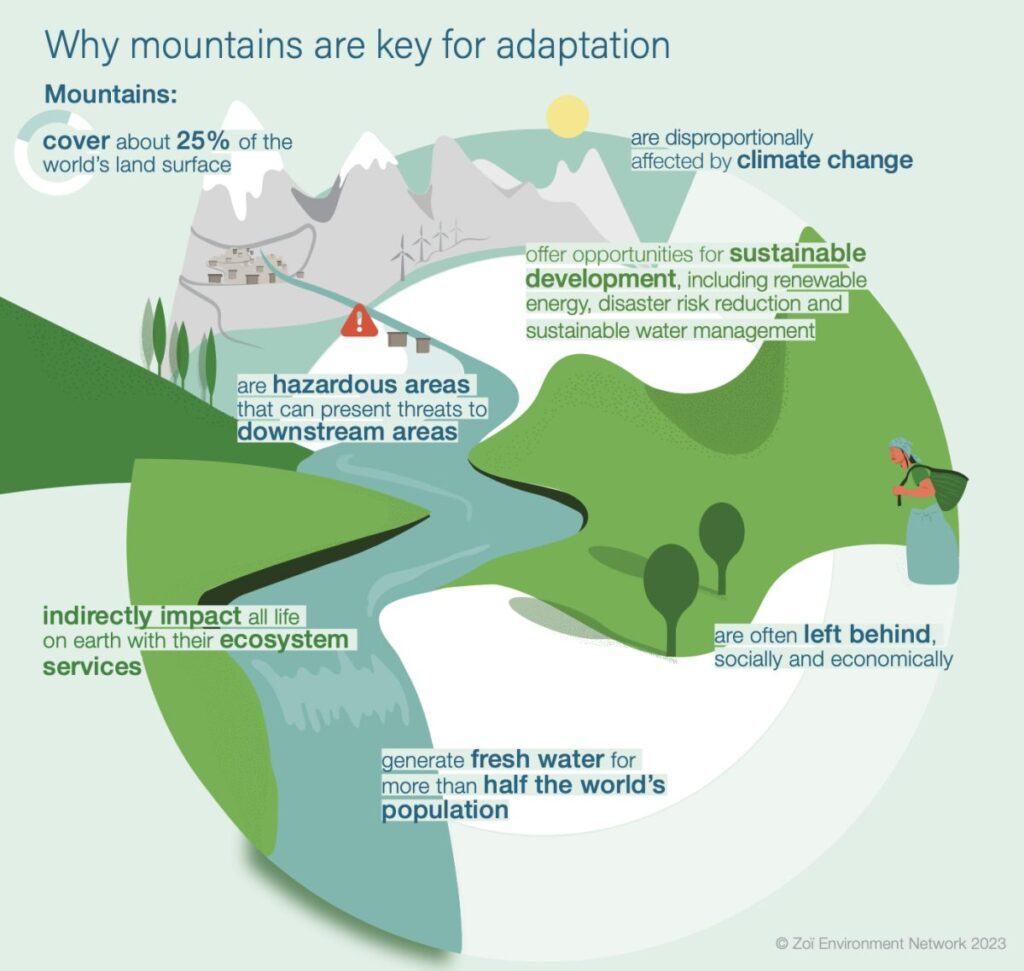Mountains in National Adaptation Plans – A short analysis

Introduction
From extreme heatwaves and devastating droughts, to deadly floods and landslides, the impacts of climate change are increasingly evident. They are already affecting communities and ecosystems worldwide. However mountains bear a disproportionate burden of these climate-related challenges. National Adaptation Plans (NAPs) help countries to anticipate, prepare for, and respond to these impacts and challenges by providing a strategic process for assessing climate risks and vulnerabilities, identifying adaptation priorities, and allocating resources efficiently.
This report gives an overview of climate change adaptation priorities specific to mountains in NAPs submitted by Non-Annex l countries under the United Nations Framework Convention on Climate Change. It also highlights examples from NAPs of climate adaptation actions in mountains and makes broad recommendations on raising awareness about mountain-specific challenges and solutions in NAP processes.
This article is an abridged version of the original text, which can be downloaded from the right-hand column. Please access the original text for more detail, research purposes, full references, or to quote text.
Approach:
The analysis presented is based on a systematic review of 46 NAPs of Non-Annex l countries submitted as of the end of July 2023. The selected NAPs were assessed for key words related to mountains, key questions covering different sectors and thematic areas, and particular types of actions. Countries were grouped according to the extent of mountainous areas within their borders using the GMBA Mountain Inventory.

Key findings:
Most countries recognize climate change impacts in mountains but many do not plan specific adaptation actions:
- 1 out of 3 countries that identify climate change impacts in their mountains does not define any climate change adaptation action to address those impacts.
- 2 out of 3 countries with more than 20% mountain area identify at least one adaptation action for mountains.
- Almost all countries with more than 60% mountain area identify climate change impacts in their mountains.

Learn more about the findings and explore case study examples on pages 4-10 of the report.
Recommendations:
While many of the assessed NAPs contain climate change adaptation measures in mountains, gaps identified in this review underline how many countries need to plan, implement and finance more such actions for and in mountain regions. The severity of climate change impacts in mountains calls for integrated plans that address all relevant sectors and thematic areas and include an effective mix of different types of actions:
- NAP processes should promote systemic adaptation rather that prioritize specific sectors, thematic areas or geographic regions.
- NAP processes should promote sustainable development of economic and social systems.
- NAPs processes should promote agile and evidence-informed adaptation.
- NAPs processes should ensure that the knowledge and interests of vulnerable groups and local communities, especially Indigenous mountain communities, is reflected in adaptation planning and implementation by engaging them in participatory planning processes.
- NAPs should be embedded in binding regulatory frameworks, and adaptation mainstreamed into sectoral policies and land-use decisions and regulations, as well as transboundary agreements, which are crucial for mountain regions.
Explore the recommendations in more detail on page 11 of the report.
Further resources
- SUGGESTED CITATION:Zwahlen, J. (2023). Leave No Mountain Behind – Mountains in National Adaptation Plans: A short analysis. The Adaptation at Altitude Programme.
Related resources
- Responding to climate change in the mountains: Opportunities for parliamentarians to act - Issue Brief
- Leave No Mountain Behind: The Synthesis Series: Is public funding of adaptation going to the mountain regions most in need?
- Climate Resilience Planning in Mountainous Regions in Nepal
- The (often) overlooked value of mountains for European citizens
(0) Comments
There is no content